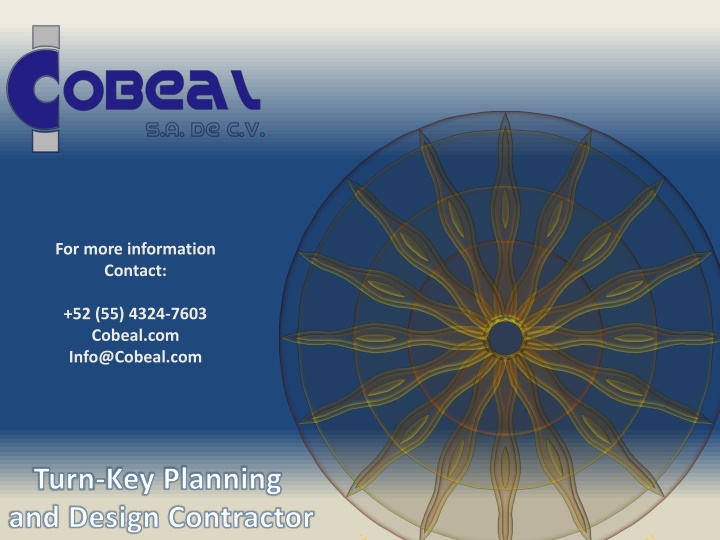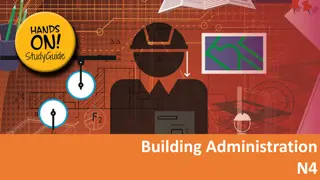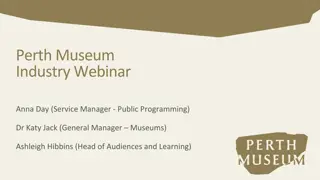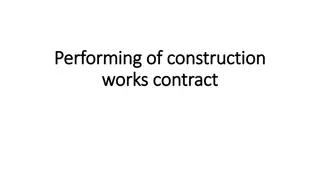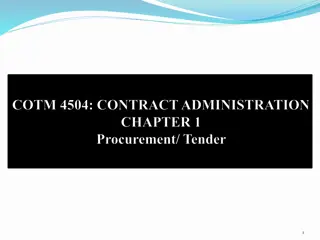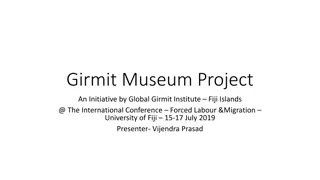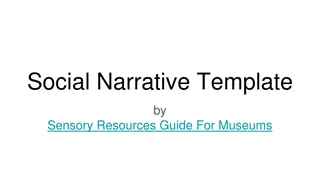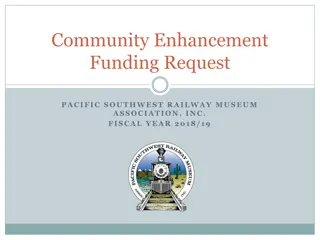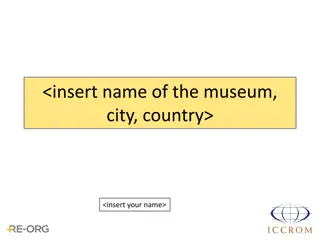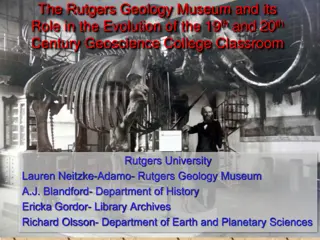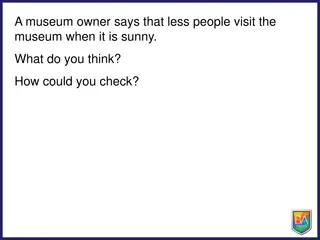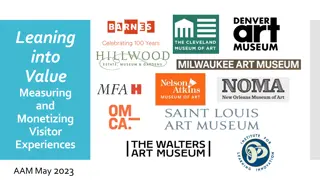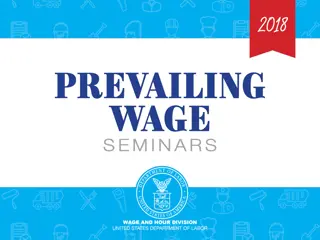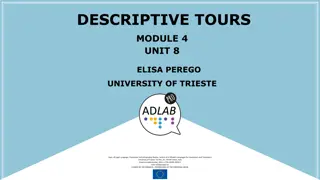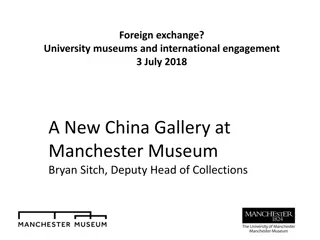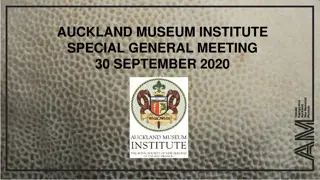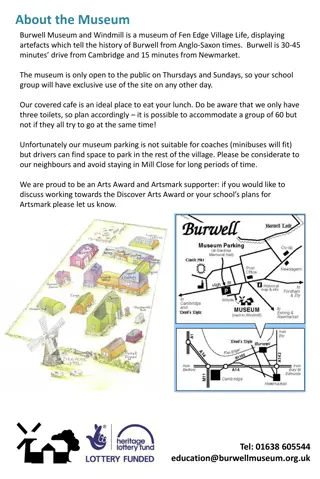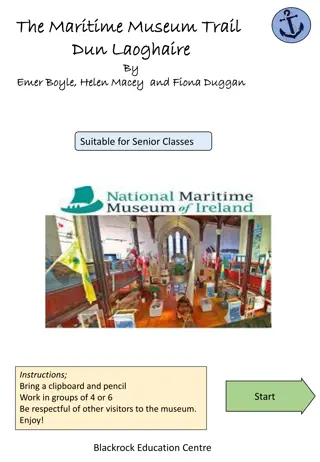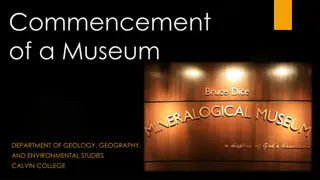Turn-Key Museum Construction Process
This presentation walks through the process of constructing a museum from pre-planning to opening day. It covers preplanning, functional plan design, construction, commissioning, evaluation, and more.
Download Presentation

Please find below an Image/Link to download the presentation.
The content on the website is provided AS IS for your information and personal use only. It may not be sold, licensed, or shared on other websites without obtaining consent from the author.If you encounter any issues during the download, it is possible that the publisher has removed the file from their server.
You are allowed to download the files provided on this website for personal or commercial use, subject to the condition that they are used lawfully. All files are the property of their respective owners.
The content on the website is provided AS IS for your information and personal use only. It may not be sold, licensed, or shared on other websites without obtaining consent from the author.
E N D
Presentation Transcript
For more information Contact: +52 (55) 4324-7603 Cobeal.com Info@Cobeal.com Turn-Key Planning and Design Contractor Tu V.
Turn-Key Museum Construction Process Explanation This presentation is designed with the client in mind. The aim is to walk through the relatively complex process of constructing a museum, from the Pre-Planning phase to Opening Day. The Museum Construction Process examines: Preplanning The Functional Plan Design Construction Planning Construction Commissioning Evaluation Turn-Key Planning and Design Contractor
Pre-Planning Purpose: To define the planning and implementation process that will result in a museum that meets the client s needs Phase I: Define the basic objectives and parameters of the project -opportunity/need -client and Cobeal roles -project stages -key decision points Phase II: Incorporate the client/institutional context for museum -mission, mandate, purpose Turn-Key Planning and Design Contractor
Pre-Planning Phase III: Define space and facilities requirements for collection -review criteria of collection and collection policies -classify collection into Display, Study, Reserve -examine conservation needs of collection -calculate exhibition and storage needs Phase IV: Determine users of the museum -review client s marketing strategy -calculate demographic and behavioral data into plan -analyze basic facility needs for attendance Turn-Key Planning and Design Contractor
Pre-Planning Phase V: Phase VI: Define space and facility requirements for public use -examine public access needs and requirements -define food service (catering) space and facilities -define retail sales potential (museum shop) -calculate visitor amenities requirements -calculate staff, space, and facilities requirements to provide public programs (activities, exhibition, programs, research) Review critical points from feasibility study -establish the budget (capital and operating costs) -review project fund-raising targets -schedule target dates Turn-Key Planning and Design Contractor
The Functional Plan Phase I: To define the museum s requirements -access, adjacencies, and circulation -zoning and functional areas -site requirements -performance criteria for building systems -room data sheets (requirements for all factors/all spaces) -unit cost plan Phase II: To define the technical requirements of Phase I -site development -foundation and structure -materials and surfaces -building systems -equipment and facilities -refine implementation schedule Turn-Key Planning and Design Contractor
The Functional Plan Phase III: To design the museum according to the Phase I & II -develop the initial design concept; defining scope, scale, and relationships of building components -prepare floor plans, sections, and elevations -prepare site plan -prepare preliminary exhibition and display design -test against requirements of Phase I & II -check against budget and schedules -refine costs, budget, program, and schedules Schematic Design Phase III: To prepare detailed floor plans -prepare site plans showing landscape design -design special systems (hvac, lighting, etc.) -test against initial design concept (Phase III) -check compliance w/regulations, by-laws, building codes -refine initial costs, budget, schedules Detailed Design Turn-Key Planning and Design Contractor
Construction Planning Phase I: To prepare the technical drawings and detailed specifications: the final dimensional, coded, comprehensive plans describing all aspects of the architectural, structural, mechanical, electrical, communications, and other systems -invite contractors to submit bids -analyze and compare bids and make recommendations -finalize contract for construction and include specifications, conditions of work, schedules, and financial procedures Turn-Key Planning and Design Contractor
Construction Phase I: To build (or renovate) the building according to the plans, specifications, and schedule -prepare the site -construct the building -monitor and control expenditure -monitor compliance with Design Intent and Functional Plan *site visits during construction are arranged through Cobeal Turn-Key Planning and Design Contractor
Commissioning Phase I: To turn the completed museum over to the owner -conduct detailed inspection -prepare list of deficiencies / assign responsibility -reduce list of deficiencies to zero to the Building Committee s satisfaction -ensure effective operation of environmental controls and all other building systems -declare contract complete and sign-off -agree on final accounts -museum takes control of building -exhibition and display contractors commence on-site installation work -train building operators and museum staff in new systems and facilities -museum operation and maintenance commences Turn-Key Planning and Design Contractor
Evaluation Phase I: To improve museum planning and building performance for future projects -study and document the performance of the building against the original objectives -analyze actual costs against cost plan -disseminate best practices to industry Turn-Key Planning and Design Contractor
